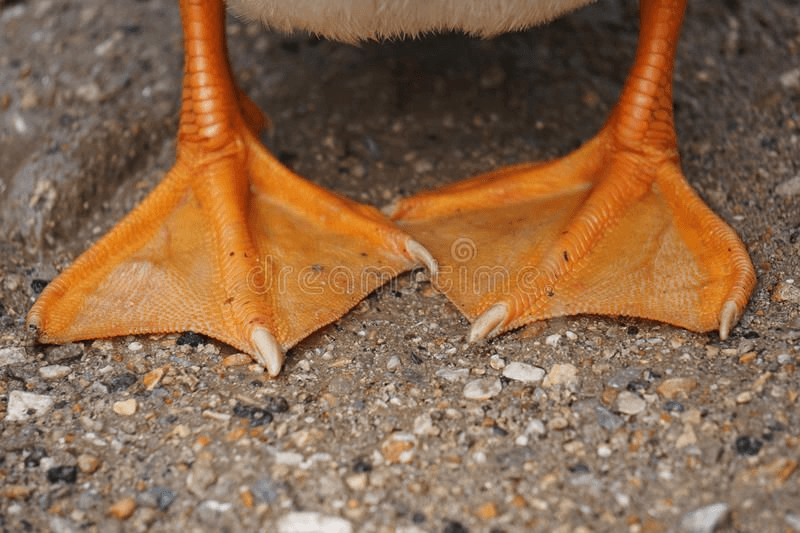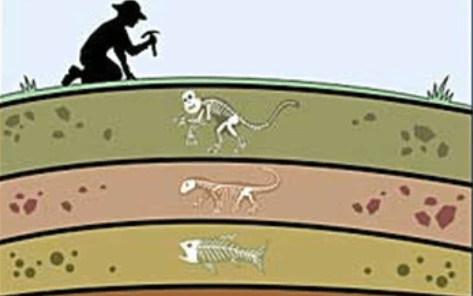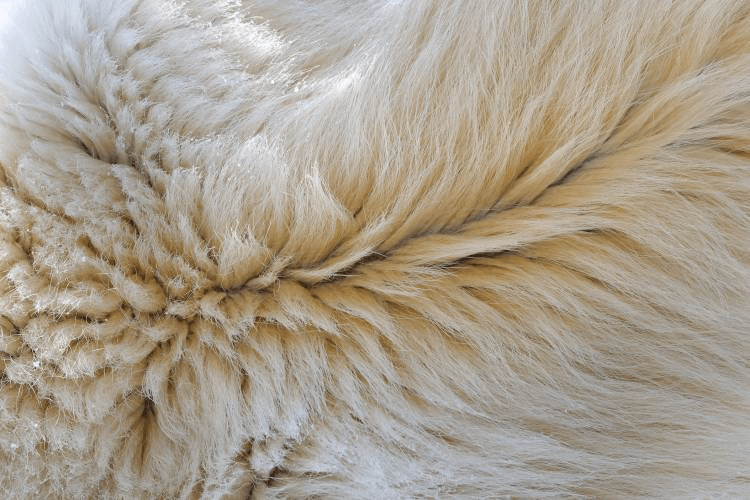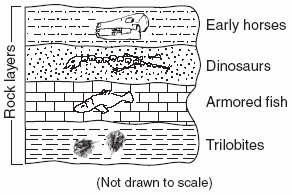A ____ is how an organism looks.
One example that a fish has is _____.
Trait
Scales, Gills, Fins, Being blue
(Or any other fish trait)
A _____ is a place where an organism lives.
Three examples are ______, _______, and ______.
Habitat
Desert, Forest, Arctic, Rain Forest, Ocean, Grassland (Or any other habitat)
The Science word for "break down" is _____.
Decompose
We can tell how old a fossil is by ____.
Looking at the layer it is buried in.
The 4 layers of the Earth are _____, _____, ______, and ______.
Crust, mantle, outer core, inner core
The most recent supercontinent, _________, was formed ______ years ago.
Pangaea
300 Million
A ______ is what an organism does.
One example for a fish is ____.
Behavior
Swimming, eating other fish, breathing oxygen, sleeping, jumping (Or any other fish behavior)
In its habitat, an organism can meet its need for _____, ______, ______, and ______.
Food
Water
Shelter
Air
Give two examples of soft parts of an organism, and two examples of hard parts.
Bones, Teeth, Claws
If we observe two fossils buried in the same layer, we would infer __________.
They are the same age
The only layer Scientists can directly observe is the ____ because ______.
Crust
It is too hot to dig deeper
When Wegener first proposed the theory of continental drift, scientists thought _____, but now, ______.
It was Rejected or it was a dumb idea
It is widely accepted
The Science word for "Get from your parents" is ____.
Inherit

I predict this organism lives in __________, because its webbed feet help it ___________, to meet its need for ________.
The pond
Swim Faster to catch food; Food
Swim Faster to escape predators; Shelter
It is hard to study ancient organisms because _______, so instead we learn about them by ______.
Time machines aren't real; they lived in prehistory; we can't observe them directly
Observing Fossils and making inferences
The youngest fossils are buried ______ while the oldest fossils are buried ________.
Close to the surface
Deeper down
We can observe pieces of the mantle, called _____, when ______.
Magma
Volcanoes Erupt
Why would it be surprising to find a coral fossil in an arctic habitat?
Coral lives in warm climates, but arctic habitats are near the poles where it is very cold.
You can inherit your parent's _______, but not your parent's ________.
Traits
Behaviors
Habitats near the ________ are the warmest because __________.
Equator
Always get direct sunlight
The steps of forming a fossil are:
1)
2)
3) Soft parts ______
4) Hard parts ______
Die
Be Buried
Soft parts decompose
Hard parts turn into rock
The oldest fossil is ____ and the youngest fossil is ___.

The oldest fossil is fish and the youngest fossil is monkey.
The crust is made of _____, the mantle is made of _____, and the core is made of _____.
Solid Rock
Liquid Rock
Metal
When scientists say, "The continents are like a jigsaw puzzle," what do they mean?
The pieces fit together
Frederick's parents have brown hair.
They like to swim.
They have green eyes and go horseback riding.
Name two traits Frederick will inherit.
Brown Hair
Green Eyes

I think this organism lived in _______ because it has _______ to help it ________, which meets its need for _______.
I think the habitat is near the _______, which are always cold because ______.
The Arctic
Thick Fur; Stay warm; Shelter
White Fur; Camouflage; Shelter
Poles; never get direct sunlight
You dig up a fossil from a dinosaur.
One part you can observe directly is ____ because _____.
One part you need to make inferences about is ____ because ____.
Bones, Teeth or Claws because they turn into rock
Organs, skin or hair because they decompose
 I infer the youngest organisms are the _______ because _______.
I infer the youngest organisms are the _______ because _______.
Early horses
They are buried closest to the top
The mantle and crust are similar because _____.
The mantle and crust are different because _____.
They are made of rock.
The mantle is made of liquid rock, but the crust is made of solid. The mantle is hotter than the crust. We can live on the crust but cannot live on the mantle.
When scientists found the same lizard fossil in Antarctica, South America, and Africa, they inferred _________.
The continents drifted